Exploring the World of Belgian Malinois Dogs
 Introduction
Introduction
The Belgian Malinois: A Remarkable Canine Companion
Belgian Malinois dogs have a fascinating history deeply intertwined with their herding and working abilities. Originally bred in the late 1800s in the Belgian city of Malines, these dogs were primarily used as herding and livestock protection dogs. Their exceptional intelligence and trainability made them invaluable on farms.
Over time, their role expanded to include police and military work. Their keen sense of smell, agility, and high energy levels made them ideal for tasks such as search and rescue, narcotics detection, and serving in K-9 units. This breed's contribution during both World Wars further solidified its reputation as a reliable and dedicated working dog.
A Brief Overview
The Belgian Malinois, often referred to as the "Mal," is a breed that combines intelligence, agility, and unwavering loyalty. These dogs are known for their versatility, excelling in various roles such as working dogs, search and rescue, police work, and even as beloved family pets. Their striking appearance, characterized by a lean and muscular body, erect ears, and a keen expression, is just one aspect of their charm.
Considerations Before Choosing a Belgian Malinois
Before bringing a Belgian Malinois into your life, it's crucial to understand the responsibilities and commitments that come with this breed. We'll explore factors like their energy levels, grooming needs, and socialization requirements to help you determine if the Malinois is the right fit for your lifestyle.
Interesting Facts and Fun Facts about Belgian Malinois
Delve into the world of Belgian Malinois with some intriguing tidbits. Discover their alternative names, nicknames, and a few fascinating historical anecdotes that showcase their incredible capabilities. By the end of this guide, you'll have a deep appreciation for the Belgian Malinois and be well-equipped to provide the care, training, and companionship that these remarkable dogs deserve.
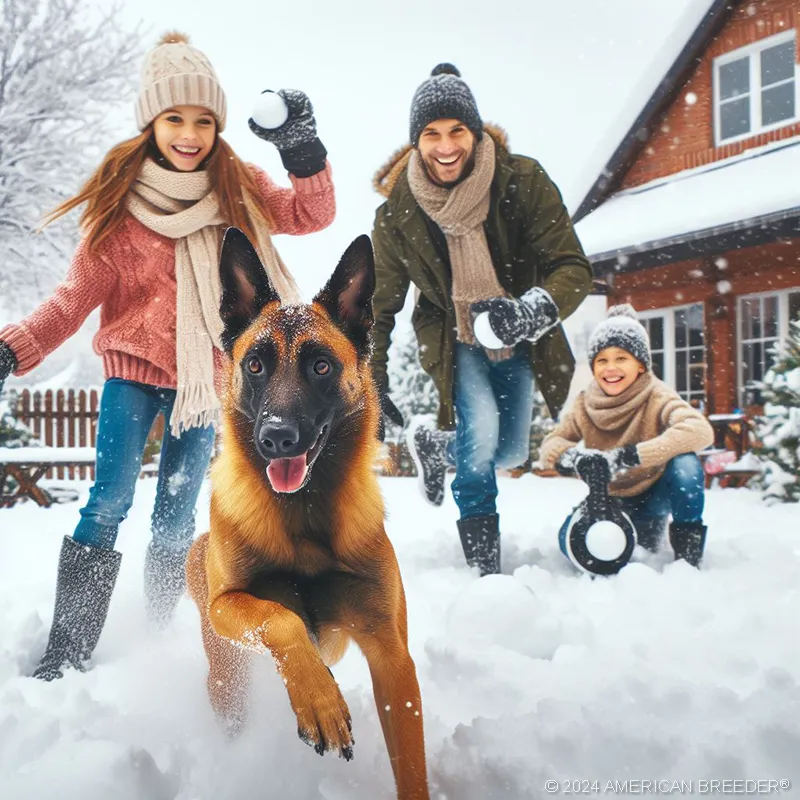 Breed Background and History
Breed Background and History
The Origins and Evolution of the Belgian Malinois
Understanding the history of the Belgian Malinois is crucial to appreciate their unique characteristics and traits. In this chapter, we'll explore the breed's origins, historical significance, and their original purpose.
The Belgian Malinois's history is steeped in the herding traditions of Belgium. These dogs were originally bred to withstand the challenging climate and terrain of the region, making them exceptionally hardy and adaptable. Their name, "Malinois," pays homage to the Belgian city of Malines, where the breed was first developed.
Belgian Malinois gained recognition in the United States through their remarkable performances in dog sports and law enforcement work. They became popular choices for police departments and the military due to their intelligence, agility, and unwavering loyalty. Today, they continue to excel in these roles and are equally cherished as family pets and companions.
Origin and Development of the Belgian Malinois
Belgian Malinois can trace their roots back to Belgium, where they were developed as herding and working dogs. Learn about their ancestral lines and how they evolved into the breed we know today.
Historical Significance or Cultural Relevance
Belgian Malinois have played significant roles in history, particularly during World War I and II. Discover how these dogs contributed to the war efforts and became symbols of bravery and dedication.
Purpose or Original Use of the Belgian Malinois
Belgian Malinois were initially bred for herding and protecting livestock. Explore their original purpose and the traits that made them excel in these roles. We'll also touch on their transition to modern-day tasks.
Kennel Clubs that classify, Group, or Register Belgian Malinois
Learn about the recognition of Belgian Malinois by various kennel clubs worldwide, including the American Kennel Club (AKC) and the Fédération Cynologique Internationale (FCI). Understand the breed standards and classifications. Understanding the history and background of the Belgian Malinois provides valuable insights into their genetic traits, temperament, and suitability for specific roles.
 Appearance
Appearance
The Striking Look of the Belgian Malinois
In this chapter, we'll dive into the physical characteristics that make the Belgian Malinois stand out. From size and weight to coat type and distinctive features, you'll gain a comprehensive understanding of their appearance. The Belgian Malinois is a medium-sized, well-proportioned dog with a strong and athletic build. Their coat is short, straight, and weather-resistant, providing them with protection during various activities. The breed's standard coat color is a rich fawn with a black mask and black ears, but they can also have a mahogany coat with black markings. Their striking appearance, combined with their alert expression, makes them an eye-catching breed.
Belgian Malinois puppies are born with floppy ears, which typically start to stand erect at around 12 weeks of age. This transition is a hallmark of the breed's growth and development. Additionally, they have a well-defined, sleek tail that completes their graceful appearance. Their overall physique reflects their agility and strength, allowing them to excel in various physical activities.
Size, Weight, Activity Level, and Physical Appearance
Get to know the size and weight ranges for Belgian Malinois, along with their activity levels and distinctive physical attributes. Discover what makes them such agile and athletic dogs.
Coat Type, Color Variations, and Patterns
Belgian Malinois boast a unique coat that comes in specific colors and patterns. Learn about their short, double coat and the accepted color variations recognized by breed standards.
Distinctive Features or Markings
Belgian Malinois are known for their striking features, including erect ears, a sleek body, and a keen expression. Explore the physical traits that set them apart from other breeds.
Average Litter Size for Belgian Malinois
If you're considering breeding Malinois or curious about their reproduction, this section provides insights into their typical litter size. Understanding the Belgian Malinois' appearance is not only essential for breed enthusiasts but also helps prospective owners recognize a purebred dog when choosing a pet.
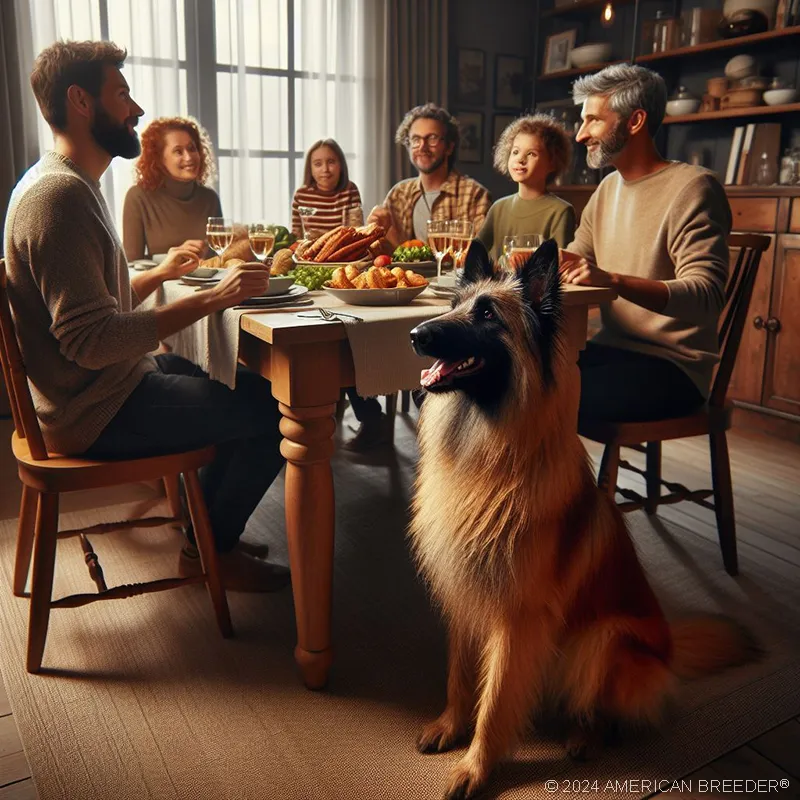 Temperament and Personality
Temperament and Personality
Unveiling the Malinois' Unique Temperament
Belgian Malinois are celebrated for their intelligence, loyalty, and work ethic. In this chapter, we'll delve deep into their temperament traits, energy levels, and compatibility with various lifestyles. Belgian Malinois are renowned for their exceptional temperament and intelligence. While they are undoubtedly loyal and affectionate with their families, they also possess a strong work ethic and protective instincts. This combination makes them ideal as both working dogs and loving companions.
Their high energy levels and intelligence require mental and physical stimulation, which can be achieved through various activities like obedience training, agility courses, and interactive play. They thrive when given a job to do and are eager to please their owners. However, this intelligence can sometimes lead to them becoming bored or destructive if not mentally engaged. Their protective nature makes them excellent watchdogs, but early socialization is crucial to ensure they are well-adjusted and comfortable around strangers and other pets. With proper training and socialization, Belgian Malinois can be affectionate family dogs while still excelling in their roles as working canines.
Typical Temperament Traits and Behavior Tendencies
Discover the core temperament traits that define the Belgian Malinois. From loyalty and protectiveness to their strong work drive, understand what makes them tick.
Energy Levels and Activity Requirements
Malinois are known for their high energy levels. Learn how to channel their energy constructively through exercise and mental stimulation to keep them happy and well-behaved.
Compatibility with Different Lifestyles and Family Dynamics
Find out whether the Malinois is a suitable match for your lifestyle, whether you live in an apartment, a house with a yard, or a rural area. We'll explore their adaptability to various living situations.
List of Typical Behavior Issues
No breed is without its challenges. We'll address common behavior issues in Malinois, including aggression, excessive barking, digging, separation anxiety, resource guarding, fear, and phobias. Understanding the Belgian Malinois' temperament is crucial for creating a harmonious relationship with these dogs, whether they're working partners or beloved family pets.
Trainability and Intelligence
The Remarkable Trainability of Belgian Malinois
Belgian Malinois are renowned for their intelligence and trainability. In this chapter, we'll explore their ease of learning, willingness to please, and problem-solving abilities.
Trainability Level and Ease of Learning
Discover just how trainable Belgian Malinois are, earning them a reputation as quick learners. We'll also delve into their eagerness to follow commands.
Intelligence and Problem-Solving Abilities
Malinois rank high in canine intelligence. Learn about their problem-solving abilities and how their sharp minds can be both a blessing and a challenge for owners.
Recommended Training Approaches and Techniques
Find out which training approaches work best for Belgian Malinois. From positive reinforcement to consistency, explore techniques that yield the best results.
Training or Skills Best Suited for Belgian Malinois
Belgian Malinois thrive in specific roles and tasks. Uncover the training and skills that are particularly well-suited for this breed, from obedience to specialized jobs. Understanding their trainability and intelligence is vital for harnessing the full potential of Belgian Malinois, whether
Practical Considerations
Preparing Your Home for a Belgian Malinois
In this chapter, we'll guide you through the practical aspects of living with a Belgian Malinois. From sleeping quarters to grooming and exercise needs, we'll help you create the ideal environment for your furry friend.
 Size of Sleeping Quarters Depending on Size
Size of Sleeping Quarters Depending on Size
Discover how to provide comfortable sleeping quarters for your Malinois, considering their size and preferences. A cozy space is essential for their well-being.
Typical Annual Veterinary Cost
Understand the financial commitment of caring for a Malinois, including annual veterinary expenses. Budgeting for their healthcare is crucial for their long-term health.
Type of Grooming and Annual Cost
Malinois have specific grooming needs based on their short double coat. Learn about grooming routines and the associated costs, including brushing, bathing, nail trimming, and ear cleaning.
Daily Exercise Needs and Requirements
Malinois require daily exercise to stay happy and healthy. We'll delve into their exercise needs and provide insights into creating an exercise routine that suits their high energy levels.
Level of Playfulness
Discover the playful side of Belgian Malinois. We'll explore their love for games and activities that stimulate their minds and bodies.
Level of Intelligence
Malinois are exceptionally intelligent dogs. Their high intelligence contributes to their trainability and problem-solving abilities.
Affection Level and Desired Attention
Explore the affectionate nature of Malinois and their desire for human attention. These dogs thrive on companionship and bonding with their families.
Friendliness Toward Strangers
Malinois have protective instincts. We'll discuss their demeanor toward strangers and how proper socialization can influence their behavior.
Grooming Needs and Frequency
Get a comprehensive overview of grooming requirements for Malinois, including brushing, bathing, nail trimming, and ear cleaning.
Feeding Requirements and Dietary Considerations
Understanding your Malinois' dietary needs is crucial for their health. Learn about portion sizes, feeding schedules, recommended dog food brands/types, and dietary restrictions. Practical considerations are essential for providing a comfortable and fulfilling life for your Belgian Malinois. By addressing their needs in these areas, you'll create a harmonious living environment.
Health and Care
Nurturing the Well-Being of Your Belgian Malinois
Ensuring the health and well-being of your Belgian Malinois is a top priority. In this chapter, we'll explore common health issues, lifespan, grooming, exercise needs, nutrition, vaccination, and preventive care.
Belgian Malinois are generally a healthy breed with a lifespan of around 12 to 14 years. However, like all breeds, they can be prone to certain health issues. One common concern is hip dysplasia, a genetic condition that can affect their hip joints. Regular veterinary check-ups and responsible breeding practices can help mitigate the risk of such issues.
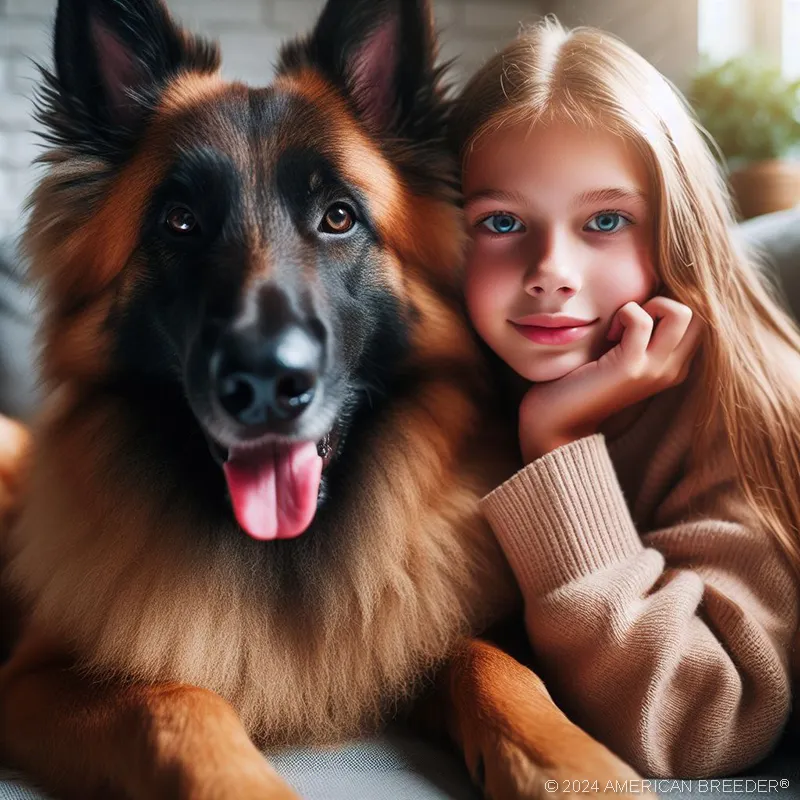 Grooming a Belgian Malinois is relatively easy due to their short coat, but they do shed seasonally. Brushing them regularly can help manage shedding and keep their coat healthy. Additionally, maintaining their dental hygiene and trimming their nails as needed is essential for their overall well-being.
Grooming a Belgian Malinois is relatively easy due to their short coat, but they do shed seasonally. Brushing them regularly can help manage shedding and keep their coat healthy. Additionally, maintaining their dental hygiene and trimming their nails as needed is essential for their overall well-being.
In terms of exercise needs, Belgian Malinois are high-energy dogs that thrive on physical activity. Daily exercise and mental stimulation are crucial to prevent boredom and potential behavioral issues. Long walks, runs, and challenging games can keep them happy and healthy.
Common Health Issues or Predispositions of Belgian Malinois
Discover the health conditions that Malinois may be predisposed to, including hip dysplasia, elbow dysplasia, eye disorders, and skin issues. Early detection and management are key.
Allergies and Specific Dietary Considerations
Some Malinois may have allergies or dietary sensitivities. We'll provide guidance on identifying and managing these issues to keep your dog in top health.
Lifespan and Longevity Expectations
Learn about the average lifespan of Belgian Malinois and how to promote their longevity through proper care and attention to their health.
Grooming Requirements Based on Coat Type and Size
Explore grooming requirements specific to the Malinois' short double coat. We'll cover brushing, bathing, nail trimming, and ear cleaning to keep them looking their best.
 Exercise Needs and Recommendations for Physical and Mental Stimulation
Exercise Needs and Recommendations for Physical and Mental Stimulation
Discover the exercise needs of Malinois and how physical and mental stimulation play a crucial role in their overall well-being.
Nutrition and Feeding Guidelines
Proper nutrition is essential for your Malinois' health. We'll provide guidelines on portion sizes, feeding schedules, recommended dog food brands/types, and the role of treats.
Vaccination Schedule and Preventive Care
Stay informed about the essential vaccinations your Malinois requires. We'll also discuss preventive care measures such as flea and tick prevention and heartworm prevention.
Regular Health Check-ups and Vet Visits
Routine vet visits are vital for your Malinois' health. Learn about the importance of regular check-ups and what to expect during these visits.
Signs of Potential Health Problems and When to Seek Veterinary Attention
Recognizing signs of potential health issues is crucial. We'll guide you through common signs of illness and when it's time to seek prompt veterinary attention.
Caring for the health and well-being of your Belgian Malinois is a responsibility that comes with great rewards. By staying informed and proactive in their care, you can enjoy a long and fulfilling journey with your beloved companion.
Socialization and Compatibility
Building Positive Connections with Belgian Malinois
In this chapter, we'll explore how Belgian Malinois interact with children, other pets, and strangers. We'll also discuss socialization needs, training ease, and dog-friendly activities.
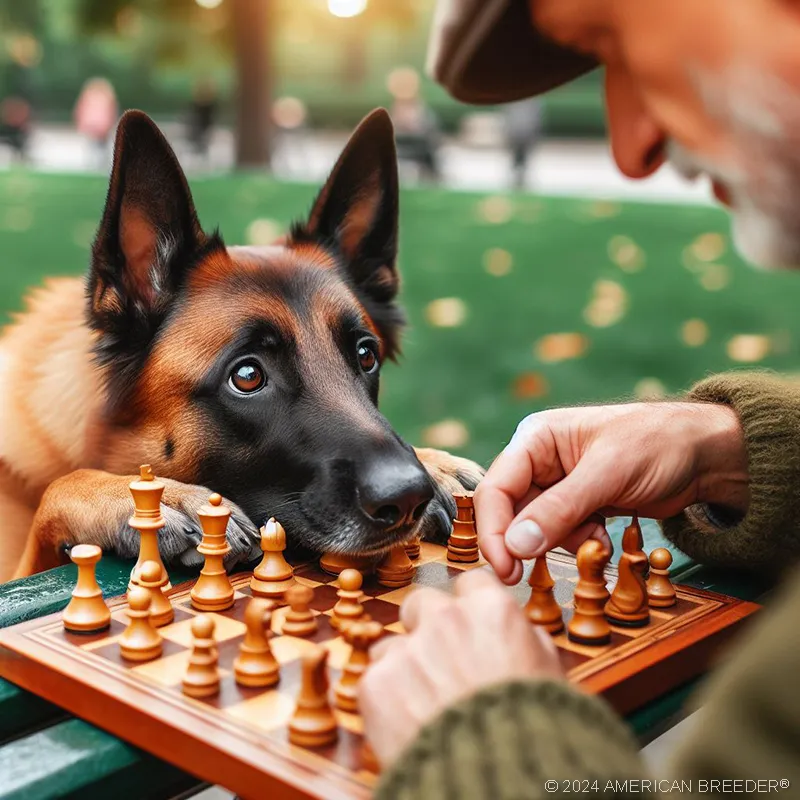 Belgian Malinois can be wonderful companions for families, but early socialization is key to ensuring they get along well with children and other pets. Their herding instincts may lead them to try and corral small children, so supervision and training are essential to prevent unintentional nipping or herding behaviors.
Belgian Malinois can be wonderful companions for families, but early socialization is key to ensuring they get along well with children and other pets. Their herding instincts may lead them to try and corral small children, so supervision and training are essential to prevent unintentional nipping or herding behaviors.
With proper socialization, they can be friendly and accepting of strangers, making them excellent family protectors. However, their protective instincts mean they may require careful introductions to new people. Positive exposure to various situations and environments from a young age helps them grow into well-rounded and confident dogs.
Their compatibility with other dogs can vary, but early socialization with other canines is essential. With the right introduction and training, Belgian Malinois can coexist peacefully with other dogs in the same household.
Interaction with Children, Other Pets, and Strangers
Discover how Malinois typically interact with children, other pets, and strangers. Understanding their behavior in various social situations is key to successful integration.
Socialization Needs and Tips for Proper Socialization
Malinois benefit greatly from socialization. We'll provide tips on how to socialize them effectively to ensure they grow into well-adjusted adults.
Precautions or Considerations for Multi-Dog Households
If you plan to have multiple dogs, understanding how Malinois interact with other canines is essential. We'll discuss precautions and considerations for harmonious coexistence.
Level of Ease When It Comes to Training Belgian Malinois
Malinois are known for their trainability, but training can present unique challenges. We'll explore the ease of training these intelligent dogs.
Playtime and Exercise with Other Dogs or Pets
Learn about the importance of playtime and exercise with other dogs or pets in your Malinois' life. These activities foster positive social interactions.
Dog-Friendly Activities and Outings
Discover activities and outings that are dog-friendly and suitable for Malinois. These adventures strengthen the bond between you and your furry friend.
Creating positive social connections and providing appropriate socialization experiences are essential for a well-rounded and confident Belgian Malinois.
Living Arrangements and Environment
Creating the Ideal Living Environment for Belgian Malinois
In this chapter, we'll explore the suitability of different living arrangements for Malinois. Whether you live in an apartment, a house, a rural area, or have a specific yard size, we'll help you understand what works best.
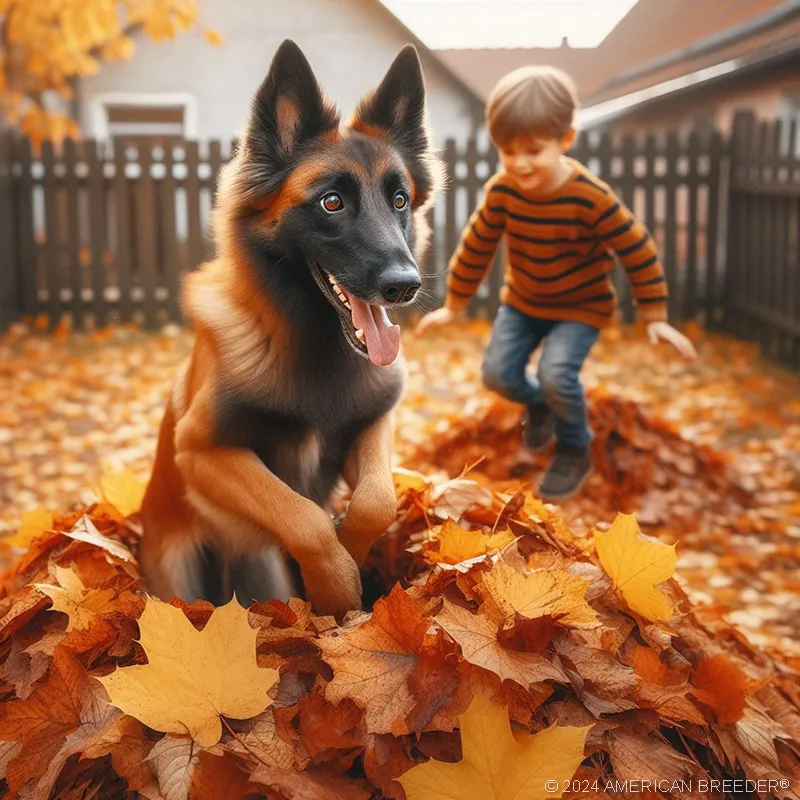 Suitability for Different Living Arrangements
Suitability for Different Living Arrangements
Find out whether Belgian Malinois are a good fit for apartments, houses, or rural areas. We'll help you determine the most suitable living arrangement for your dog.
Belgian Malinois are adaptable dogs that can thrive in various living arrangements. While they are active and enjoy outdoor activities, they can also adapt to apartment living if they receive sufficient exercise and mental stimulation. However, a spacious yard where they can run and play is an ideal environment for them.
Their adaptability extends to different climates, but they may be more comfortable in cooler temperatures due to their dense double coat. Providing shade and water during hot weather is essential to prevent overheating. Similarly, they should have access to warmth during colder months.
Understanding their need for exercise and mental stimulation is crucial when considering living arrangements. Ensuring they have ample opportunities for physical and mental activity is vital to their happiness and well-being.
Space Requirements and Exercise Options
Discover the space requirements for Malinois and how to provide ample exercise options, even in limited living spaces.
Climate Considerations and Adaptability
Malinois are adaptable dogs, but climate can impact their comfort. We'll discuss how to ensure they thrive in different weather conditions.
Recommended Yard Size for Belgian Malinois
Belgian Malinois are active dogs that enjoy spending time outdoors. In this section, we'll explore the recommended yard size and ideal living conditions to ensure your Malinois thrives.
Ideal Living Conditions and Environment
Learn about the environmental factors that contribute to a Malinois' well-being. We'll cover aspects like temperature, shelter, and outdoor access to create a comfortable living environment.
Providing the right living arrangements and environment for your Belgian Malinois is essential for their happiness and overall quality of life.
Training and Obedience
Cultivating Obedience and Skills in Belgian Malinois
Training is a fundamental aspect of living with a Belgian Malinois. In this chapter, we'll delve into basic obedience, advanced training, house training, leash training, and walking etiquette.
 Training a Belgian Malinois is an enriching experience due to their high intelligence and eagerness to please. However, they require consistent and firm training methods to ensure they grow into well-behaved dogs. Positive reinforcement techniques work exceptionally well with this breed, rewarding good behavior with treats and praise.
Training a Belgian Malinois is an enriching experience due to their high intelligence and eagerness to please. However, they require consistent and firm training methods to ensure they grow into well-behaved dogs. Positive reinforcement techniques work exceptionally well with this breed, rewarding good behavior with treats and praise.
Belgian Malinois excel in various dog sports and activities, including obedience trials, agility, and protection training. Engaging in these activities not only provides physical exercise but also stimulates their minds. Training sessions should be regular and varied to prevent boredom and maintain their focus.
As highly trainable dogs, Belgian Malinois often thrive when they have a job to do. Providing them with tasks, such as retrieving, herding, or participating in canine sports, not only keeps them mentally engaged but also helps channel their energy constructively.
Basic Obedience Training and Commands
Discover essential obedience training commands that every Malinois owner should teach their dog. From "sit" and "stay" to "come" and "heel," we'll cover the basics.
Advanced Training or Specialized Activities Suited for Belgian Malinois
Malinois excel in advanced training and specialized roles. Explore the possibilities, from agility and protection training to search and rescue missions.
Behavioral Challenges or Specific Training Considerations
Addressing behavioral challenges is part of training any dog. We'll discuss common issues specific to Malinois and how to manage them effectively.
House Training and Potty Training Tips
House training is crucial for a well-behaved Malinois. Learn effective house training and potty training techniques to avoid accidents indoors.
Leash Training and Walking Etiquette
Walking your Malinois should be a pleasant experience. We'll provide guidance on leash training and proper walking etiquette to ensure enjoyable outings.
Training and obedience are key to a harmonious relationship with your Belgian Malinois. With the right techniques and consistency, you can nurture a well-behaved and responsive companion.
Exercise and Activity
Meeting the Energetic Needs of Belgian Malinois
In this chapter, we'll explore the daily exercise needs of Malinois, mental stimulation activities, exercise routines, and energy outlets for these high-energy dogs.
 Exercise is a fundamental aspect of caring for a Belgian Malinois. Their high energy levels demand daily physical activity. A lack of exercise can lead to restlessness and potentially destructive behavior. Engaging in activities like jogging, hiking, or playing fetch can help meet their exercise needs.
Exercise is a fundamental aspect of caring for a Belgian Malinois. Their high energy levels demand daily physical activity. A lack of exercise can lead to restlessness and potentially destructive behavior. Engaging in activities like jogging, hiking, or playing fetch can help meet their exercise needs.
In addition to physical exercise, mental stimulation is equally important. Belgian Malinois have sharp minds and enjoy solving puzzles or participating in obedience training. Engaging their intelligence through interactive toys and games can prevent boredom and behavioral issues.
It's important to note that exercise should be adapted to their age and physical condition. Younger Malinois may require more vigorous activities, while older ones benefit from gentler exercises. Always consider their individual needs when planning their exercise routine.
Daily Exercise Needs and Recommendations
Malinois have high energy levels and require daily exercise. Discover how much exercise they need and how to keep them physically fit.
Mental Stimulation Activities and Games
Stimulating your Malinois' mind is as important as physical exercise. We'll introduce mental stimulation activities and games that challenge their intelligence.
Exercise Routines and Activity Ideas
Create an exercise routine that suits your Malinois' needs. We'll provide ideas for activities that cater to their athleticism and love for play.
Energy Outlets for High-Energy Breeds
High-energy breeds like Malinois need outlets for their vitality. Learn how to channel their energy constructively through various activities and games.
Meeting the exercise and mental stimulation requirements of your Belgian Malinois is essential for their physical and mental well-being.
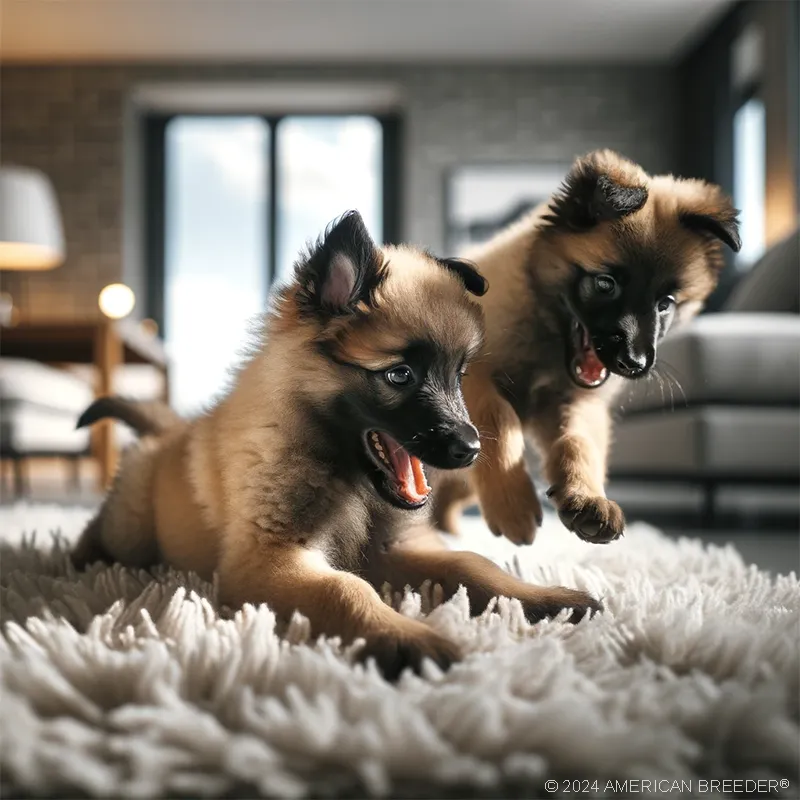 Financial Planning
Financial Planning
Owning a Belgian Malinois involves financial responsibility beyond the initial purchase or adoption fee. Consider the long-term expenses, including high-quality dog food, regular vet visits, grooming, training classes, and necessary supplies like collars, leashes, and toys.
Budgeting for unexpected medical costs is also essential. While Belgian Malinois are generally healthy, unforeseen illnesses or accidents can occur. Many pet owners opt for pet insurance to help cover such expenses, providing peace of mind and financial security.
Additionally, when planning for vacations or travel, factor in the cost of pet care or boarding if your Malinois will not accompany you. Finding trustworthy pet sitters or boarding facilities ensures your dog's well-being while you're away.
Budgeting for Your Belgian Malinois
Owning a Belgian Malinois comes with financial responsibilities. In this chapter, we'll discuss the typical price range, initial costs, ongoing expenses, pet insurance, and pet care during vacations.
Initial Costs
Prepare for the initial costs of owning a Malinois, including adoption fees or purchase price, vaccinations, spaying/neutering, microchipping, and other essentials.
Ongoing Expenses
Budgeting for ongoing expenses is crucial. We'll break down the costs of food, grooming, veterinary care, training, toys, and supplies. Considerations for Pet Insurance or Budgeting for Unexpected Medical Costs. Explore the option of pet insurance and budgeting for unexpected medical costs. Having a financial safety net is essential for your Malinois' health.
Options for Pet Care During Vacations or Travel
When you travel, you need to ensure your Malinois receives proper care. We'll discuss options for pet care, from boarding to pet sitters.
Financial planning is a vital aspect of responsible ownership. By budgeting and preparing for expenses, you can provide the best care for your Belgian Malinois.
Responsible Ownership and Ethical Considerations
Ethical and Responsible Care for Your Belgian Malinois
In this chapter, we'll discuss responsible ownership, adopting from shelters or rescues, choosing reputable breeders, avoiding puppy mills, spaying/neutering considerations, and the commitment required for ethical breeding decisions.
 Adopting from Shelters or Rescues
Adopting from Shelters or Rescues
Consider the option of adopting a Malinois from shelters or rescues. Learn about the benefits of giving a home to a dog in need.
Researching and Choosing Reputable Breeders
If you decide to purchase from a breeder, it's essential to choose a reputable one. We'll provide guidance on researching and selecting the right breeder.
Avoiding Puppy Mills and Supporting Ethical Breeding Practices
Puppy mills are detrimental to dogs' well-being. Discover how to avoid puppy mills and support ethical breeding practices that prioritize the health and happiness of dogs.
Spaying/Neutering Considerations and Responsible Breeding Decisions
Understand the importance of spaying/neutering and responsible breeding decisions. These practices contribute to the overall welfare of the breed.
Commitment and Time Dedication Required for Responsible Dog Ownership
Owning a Malinois is a long-term commitment. We'll discuss the time and dedication required to provide a loving and suitable home for your dog.
Responsible ownership and ethical considerations are fundamental to ensuring the welfare of Belgian Malinois. By making informed and compassionate choices, you contribute to the betterment of the breed.
Legal Responsibilities and Regulations
Complying with Legal Obligations as a Dog Owner
In this chapter, we'll address legal responsibilities, including licensing requirements, local regulations, leash laws, vaccination obligations, and other legal aspects of dog ownership.
Licensing Requirements and Local Regulations for Dog Ownership
Understand the licensing requirements and local regulations that apply to dog ownership in your area. Compliance is crucial to avoid legal issues.
Conclusion
A Lifelong Journey with Your Belgian Malinois
Congratulations! You've completed our comprehensive guide to the Belgian Malinois Dog. We've covered every aspect of this remarkable breed, from its history and temperament to training, health, and responsible ownership.
By now, you should have a deep understanding of what it takes to provide a loving and fulfilling life for your Belgian Malinois. Whether you're considering bringing one into your home or you're already a devoted owner, the knowledge you've gained will serve you and your furry friend well.
Belgian Malinois Dog Quick Reference Guide
 Breed Background: Origin: Belgium | Breed Purpose: Herding and Working | AKC Class: Herding Group | Year Recognized by AKC: 1959
Breed Background: Origin: Belgium | Breed Purpose: Herding and Working | AKC Class: Herding Group | Year Recognized by AKC: 1959
Appearance: Size: Medium | Weight: 40-80 pounds | Coat Type: Short, dense double coat | Colors & Patterns: Fawn with black mask and ears, or mahogany with black overlay | Distinctive Features: Triangular, erect ears and alert expression
Temperament: Energy Level: 5 | Loyalty: 5 | Friendliness to Pets: 3 | Friendliness to Strangers: 3 | Trainability: 5 | Playfulness: 4 | Frequent Barker: 3 | Chase Instincts: 5 | Sense of Smell: 4 | Drive to Hunt: 4
Health & Care: Health Issues: Hip Dysplasia, Progressive Retinal Atrophy (PRA), Bloat | Lifespan: 12-14 years | Grooming Difficulty: Low | Exercise Needs: High
Socialization: Interaction with Children: Good with early socialization | Interaction with Pets: Variable, with proper socialization | Interaction with Strangers: Cautious, may be reserved | Elderly Compatibility: Depends on activity level | Ease of Training: Moderate to easy
Suitable Living Arrangements: Apartment: No | House: Yes | Rural Area: Yes | Yard Size Requirements: Medium to large yard recommended
Training & Obedience: Trainability: 5 | Intelligence: 5 | Obedience: 4 | Problem-Solving: 5 | Easily Stimulated: 5 | Focus Level: 5 | Easily Distracted: 3
Financial Planning: Typical Price Range: $800 - $2,500 | Initial Expenses: Vaccinations, microchipping, spaying/neutering, crate, basic training | Ongoing Annual Expenses: Food, grooming, regular vet visits, toys
Breeding: Reproductive Maturity: 6-9 months | Litter Frequency: Once a year | Litter Size: 6-10 puppies | Stud Cost: Varies widely | Breeding Challenges: Finding suitable mates, ensuring health testing

